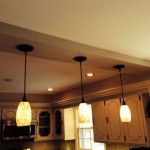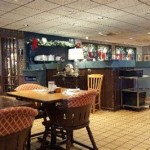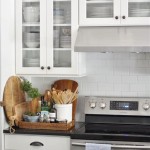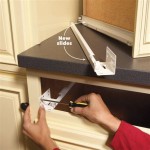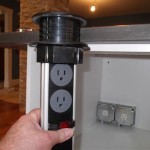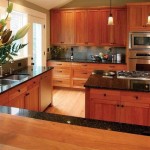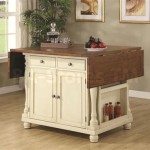How to Decorate a Kitchen Island
The kitchen island has evolved beyond a mere workspace to become a focal point of the modern kitchen. It serves as a multi-functional zone for food preparation, dining, social gatherings, and even homework. Consequently, its decoration deserves careful consideration to enhance both its aesthetic appeal and its practical usability. This article explores several approaches to decorating a kitchen island, providing information on how to achieve a stylish and functional design.
Considering Functionality and Practicality
Before embarking on the decorative process, it is imperative to evaluate the primary function of the kitchen island. This determines the type and extent of decoration suitable for the space. For an island primarily used for food preparation, prioritizing ease of cleaning and resistance to spills is crucial. For an island that doubles as a dining area, the focus should shift towards creating an inviting and comfortable atmosphere.
The size of the island also plays a significant role. A large island offers more surface area, allowing for a greater variety of decorative elements. Conversely, a smaller island requires a more minimalist approach to avoid overcrowding. Moreover, the presence of appliances, such as a built-in stovetop or sink, dictates the available space and impacts the placement of decorative items.
Materiality is another important factor. Countertops made of durable materials like granite or quartz are inherently resistant to staining and scratching, making them suitable for high-traffic areas. Wooden countertops, while aesthetically pleasing, require more frequent maintenance to prevent damage from moisture and spills. The choice of material informs the overall aesthetic and influences the types of accents that complement it effectively.
Lighting is essential for both functionality and aesthetics. Pendant lights suspended above the island provide task lighting for food preparation and create a visually appealing focal point. The style of the lighting should complement the overall kitchen design, whether it is modern, traditional, or rustic. Dimmers allow for adjusting the intensity of the light to create different moods, from bright and functional to soft and ambient.
Storage solutions can be integrated into the island's design to enhance its practicality. Built-in drawers and cabinets provide ample space for storing cookware, dishes, and other kitchen essentials. Open shelving can be used to display decorative items, such as cookbooks or pottery, while keeping frequently used items within easy reach. The type and placement of storage solutions should be carefully considered to maximize space and efficiency within the kitchen.
Exploring Different Decorative Styles
The decorative style should align with the overall aesthetic of the kitchen. A modern kitchen typically benefits from a minimalist approach with clean lines and geometric shapes. A traditional kitchen, on the other hand, can incorporate more ornate details and classic materials. A farmhouse kitchen often features rustic elements, such as reclaimed wood and vintage accents.
One popular decorative element is the use of bowls and trays. A large wooden bowl filled with fresh fruit or vegetables can add a touch of natural beauty and color to the island. A decorative tray can be used to corral smaller items, such as salt and pepper shakers, utensils, or coasters, keeping the surface clutter-free and organized.
Plants and flowers can bring life and vibrancy to the kitchen island. A small herb garden in pots not only adds visual appeal but also provides fresh herbs for cooking. A vase of fresh flowers can brighten up the space and create a welcoming atmosphere. Consider the size of the plants and the amount of sunlight available when choosing which types to include.
Cookbooks are both functional and decorative. Stacking a few favorite cookbooks on the island can add a touch of personality and provide easy access to recipes. Choose cookbooks with visually appealing covers and spines to enhance their decorative value. A cookbook stand can be used to display a specific recipe while cooking, keeping the pages clean and open.
Decorative objects, such as sculptures, vases, or figurines, can add a unique touch to the kitchen island. Choose objects that complement the overall style of the kitchen and reflect personal taste. Avoid overcrowding the island with too many objects, as this can make it feel cluttered and disorganized. A few well-chosen pieces can create a focal point and add visual interest.
Implementing Specific Decorative Techniques
Creating visual balance is essential for a well-decorated kitchen island. This can be achieved by distributing decorative elements evenly across the surface. Avoid placing all the items on one side of the island, as this can create an unbalanced and asymmetrical look. Consider the height and size of the items when arranging them to create a visually pleasing composition.
Using color strategically can enhance the overall aesthetic of the kitchen island. Choose colors that complement the existing color scheme of the kitchen. Accent colors can be used to add pops of vibrancy and visual interest. Neutral colors can create a calm and relaxing atmosphere. The color of the decorative elements should be carefully considered to create a cohesive and harmonious look.
Texture can add depth and interest to the kitchen island. Incorporate different textures, such as wood, metal, glass, and fabric, to create a tactile and visually appealing surface. A wooden cutting board can add warmth and texture to the island. A metal bowl can add a touch of industrial chic. A glass vase can reflect light and add sparkle. The combination of different textures can create a more dynamic and engaging space.
Seasonal decorations can be used to update the kitchen island throughout the year. During the holidays, add festive accents, such as pumpkins, ornaments, or candles. In the spring, incorporate fresh flowers and greenery. In the summer, display colorful fruits and vegetables. In the fall, showcase autumnal foliage and gourds. Seasonal decorations can help to create a festive and welcoming atmosphere.
Maintaining a clean and organized kitchen island is crucial for its overall appearance. Regularly wipe down the countertops and remove any clutter. Keep decorative items clean and dust-free. A tidy island not only looks better but also functions more efficiently. A clean and organized space promotes a sense of calm and well-being.
Ultimately, decorating a kitchen island is a matter of personal preference and creative expression. The key is to create a space that is both functional and aesthetically pleasing, reflecting individual tastes and enhancing the overall design of the kitchen. By considering functionality, exploring different decorative styles, and implementing specific decorative techniques, achieving a stylish and inviting kitchen island is attainable.

18 Easy And Stylish Kitchen Island Decor Ideas

18 Easy And Stylish Kitchen Island Decor Ideas

Decorating Your Kitchen Island 7 Easy Style Ideas The Zhush

Kitchen Island Decorating Diy Centerpiece

Designer Tips How To Decorate Your Kitchen Island Mary Maloney Bee S Knees

Kitchen Island Decorating Ideas To Celebrate Spring Calypso In The Country

Kitchen Island Decor Ideas Stefana Silber

The Ultimate Guide To Kitchen Island Decoration Doğtaş

How To Decorate A Kitchen Island For Spring Thistlewood Farm Decor Farms

Simple Kitchen Island Decorating Ideas Wilshire Collections
Related Posts

